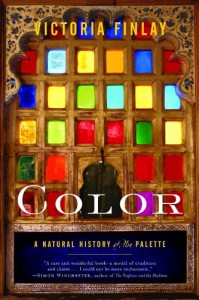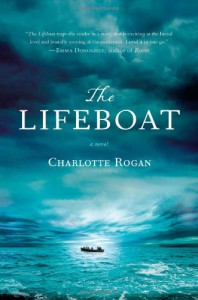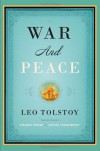
Raami is a seven year old girl living happily with her extended family in Phnom Penh, the capital of Cambodia, when a revolutionary group called the Khmer Rouge uproot them from everything. Forced out of the capital, Raami and her family are moved from village to village, place to place, brutalised everywhere they go. They are separated from loved ones and forced to work all hours on massive construction projects doomed to failure. Private cooking is banned and farmers made to plant rice out of season, leading to mass starvation and disease. Fear is everywhere as the Khmer Rouge are on the hunt for enemies and Raami must hide her connections to the disposed royal family. One by one, Raami's family members succumb to death and Raami has to fight for even the smallest chance of survival in an increasingly violent world.In the Shadow of the Banyan makes grim reading at times. The author grew up in the killing fields and explains in the afterword that Raami doesn't go through anything that she herself didn't experience as a child. And there's so much suffering in this book - murder, starvation, exhaustion, disease, horror, fear, all of it is there. Ratner doesn't shy away from the darker side of Cambodian history, but puts it all there on the page and it's impossible as a reader to not feel completely horrified at the atrocities. I've read about genocides and the Chinese 'Great Leap Forward' (which the history in this book reminded me of), but it's rare to come across such a hard-hitting account of tragedy as this. Raami is so relatable that you almost feel as though you are suffering alongside her.But despite all of this, Ratner somehow manages to balance suffering with enough hope and beauty to make the story bearable. There are glimpses of people still caring for each other, of a young boy collecting snails to feed to his starving sister, of Raami's mother giving up her portion of food so Raami can stay alive, of the kindness of strangers. Cambodia itself is described in lush, colourful terms that also help to give the book some balance; the green rice paddies, bright flowers and in the beginning, the jewel coloured saris of the women and saffron robes of the monks. Even though the events of the book are horrific, you can sense the love Ratner has for Cambodia.Choosing to narrate the book through the eyes of a seven year old child was always going to be a risk and at times Raami does seem too knowing, especially concerning the relationships between adult family members and their thought processes. But on the other hand it mirrors the naivety of the reader and allows Ratner to tell the story without getting bogged down in politics, it's just a human story. Raami is forced to grow up quickly through the book and the contrast between her character in the beginning and at the end is realistic. From the beginning, I was completely invested in Raami as a character and desperate for her to find some happiness.I loved In the Shadow of the Banyan. It may cover a difficult topic but it's an important one for us as human beings and Ratner's writing is simply beautiful. Highly recommended."I had learned not to be afraid of owls or other night creatures. Animals are not like people. If you leave them alone, they won't hurt you. But people will, even if you've done no wrong. They hurt you with their guns, their words, their lies and broken promises, their sorrow."
 The eNotated Alice in Wonderland is an electronic version of the story with parts highlighted. These direct you to notes that explain the text, offer context or give a theoretical viewpoint. As well as this, there are two short essays after the story that give more interpretation.This review isn't going to be about the story of Alice in Wonderland, but rather my experience with the notes themselves and how this added to my reading. Believe it or not, this is the first time I've read an annotated version of a classic and on the whole I enjoyed it. The notes that I appreciated the most where the ones that gave background context about Carroll himself and the inspiration for the story. I knew Alice was a real girl, but I didn't know she kept rabbits as pets, actually had a cat called Dinah or that the Queen of Hearts was based on her rather overbearing mother (I hope the mother herself didn't find this out!).I knew a fair bit about the Victorians before reading this, but added bits of context are always welcome. For example, I wasn't aware that families often renamed their servants, even going so far as to give a string of servants the same name so that they would only have to learn one name. Apparently, 'Mary Ann' was a popular name for a servant. Alongside these context notes, I liked the ones about Carroll's construction of the story and how this changed over time; the tea party wasn't in the original draft, meaning the Mad Hatter and March Hare were initially absent.My feelings about the notes offering critical interpretation were more mixed. I was interested to see the theories but had I been reading the story for the first time, they would have stopped me coming up with my own ideas about what the story means. For that reason, I think versions like this are best suited to those already familiar with the story. Sometimes there were a lot of notes on each page and I didn't know which ones to select. I read this on an old kindle so I don't know if this would work on colour devices, but it might be nice to somehow differentiate the context notes from the theory ones, so the reader can select just the notes they are interested in. I also think the notes best suited to an American audience as there were a few explanations of British phrases that I personally didn't need the notes for; 'leave off' and 'box her own ears' were a few examples.I do feel that I got more out of the text reading the notes alongside it. The two essays at the end were very interesting (I wish there had been more) and I feel I have more of an understanding of Carroll and why he wrote the story he did. The inclusion of many illustrations from early editions was a nice touch that made reading more pleasurable. On the whole, I'd recommend this to others, especially those already familiar with the story.
The eNotated Alice in Wonderland is an electronic version of the story with parts highlighted. These direct you to notes that explain the text, offer context or give a theoretical viewpoint. As well as this, there are two short essays after the story that give more interpretation.This review isn't going to be about the story of Alice in Wonderland, but rather my experience with the notes themselves and how this added to my reading. Believe it or not, this is the first time I've read an annotated version of a classic and on the whole I enjoyed it. The notes that I appreciated the most where the ones that gave background context about Carroll himself and the inspiration for the story. I knew Alice was a real girl, but I didn't know she kept rabbits as pets, actually had a cat called Dinah or that the Queen of Hearts was based on her rather overbearing mother (I hope the mother herself didn't find this out!).I knew a fair bit about the Victorians before reading this, but added bits of context are always welcome. For example, I wasn't aware that families often renamed their servants, even going so far as to give a string of servants the same name so that they would only have to learn one name. Apparently, 'Mary Ann' was a popular name for a servant. Alongside these context notes, I liked the ones about Carroll's construction of the story and how this changed over time; the tea party wasn't in the original draft, meaning the Mad Hatter and March Hare were initially absent.My feelings about the notes offering critical interpretation were more mixed. I was interested to see the theories but had I been reading the story for the first time, they would have stopped me coming up with my own ideas about what the story means. For that reason, I think versions like this are best suited to those already familiar with the story. Sometimes there were a lot of notes on each page and I didn't know which ones to select. I read this on an old kindle so I don't know if this would work on colour devices, but it might be nice to somehow differentiate the context notes from the theory ones, so the reader can select just the notes they are interested in. I also think the notes best suited to an American audience as there were a few explanations of British phrases that I personally didn't need the notes for; 'leave off' and 'box her own ears' were a few examples.I do feel that I got more out of the text reading the notes alongside it. The two essays at the end were very interesting (I wish there had been more) and I feel I have more of an understanding of Carroll and why he wrote the story he did. The inclusion of many illustrations from early editions was a nice touch that made reading more pleasurable. On the whole, I'd recommend this to others, especially those already familiar with the story.




















